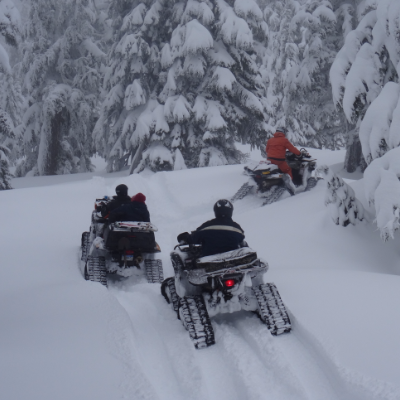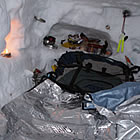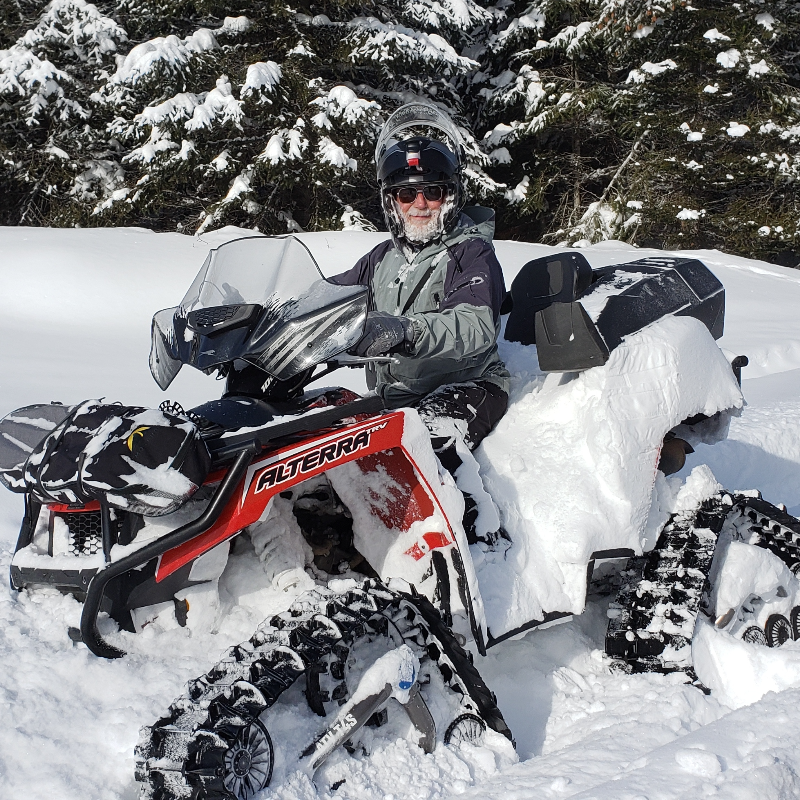“Hey guys, look at the great deal I got on my avalanche gear.”
That comment always makes me cringe. Typically, if there are great deals offered on avalanche safety equipment, it is because the equipment is lower quality or isn’t selling well. In my opinion, top dollar should be considered for all your avalanche rescue tools.
I’m embarrassed to say that we didn’t recognize this importance when we first started sledding in the mountains. We had very old-school avalanche transceivers that were sold off from a rental company—no lights, no sound, just an earbud. We carried good-quality, long-handled shovels, as any good snowmobiler does, but we made a conscious decision to not invest in probes.
“We can get away without those,” we thought.
A few years later, we attended an evening avalanche awareness seminar. The instructor, Darcy Svederus, did a wicked job of waking us up to the reality that avalanche safety is not about finding a target, it is about saving a life. Every tool and trick that you can put in your tool kit saves valuable seconds—maybe even minutes. Not having a proper avalanche probe can mean the difference between life and death.
We walked out of that room thankful that we learned our lesson in the classroom and not at a funeral.
Size matters
An avalanche probe that is too flimsy or too short may not do what you need it to do. Avalanche rescue best practices have evolved considerably in the last few years. Professional rescuers, carrying top quality transceivers, shovels and probes, have successfully recovered people buried under three metres of debris! These are the skills that we are teaching in Avalanche Skills Training (AST) Level 1 classes.
If you have a probe shorter than three metres long, it is possible that you couldn’t use it to quickly locate a person within a livable depth. This means you will waste valuable time locating a person, and without a confirmed probe target, the shoveller's activities will be unfocused. The digging is likely to go off-track.
The transceiver fine search defines a rough target area; however, it is the probe that creates a precise target point.
What to look for
We tend to choose probes with cable fastening systems rather than cords. Extra slack in the cable allows the unit to fold comfortably without kinking and wearing the cable on the raw edges of each segment. Bevels at the joints speed up assembly considerably.
Next, consider the fastening system. It is best to choose a probe with an adjustment feature so that, as the cable stretches, the slack can be removed from the probe. Slack in the cable will allow snow to get caught between the probe sections as you pull the unit up through the dense debris. This can create drag and damage.
Can snow clog the workings or threads?
Years ago, I had a probe with an inner segment that slid through a slightly larger outer segment and closed with a pop pin. I was using the probe throughout the day to test snow depths and densities. Later in the day, a mock rescue took place and I felt useless as these two shafts had frozen together. This wasted my time and I wasn’t able to break it free. Needless to say, this style of probe is no longer in our kits.
Some probes have alternate materials used at the working end of the probe to give more traction or grip points. This can be helpful as the palm area of some gloves tends to ice up making it hard to grip the smooth surface of the probe shaft itself. Avalanche debris can be dense, thus requiring significant pressure to push the probe to depth.
Centimetre markings are a nice feature as the probe can double as a measuring device for checking snow depths. If you push the probe gently into the snow with a light tapping motion, you may also be able to feel density changes within the snowpack.
Some weak layers are identifiable with just a probe. For example, cohesive, well-rounded snow will offer resistance, whereas weak, sugary, faceted snow will allow the probe to drop through with the only downward force being the weight of the probe.
How to assemble and disassemble a probe
When assembling a probe, hold it by the topmost section and pull on the cable or cord. Toss the loose sections of the probe downhill and away from you. Now pull on the cable taking all slack out of the system and fasten it securely.
To disassemble, release the cable system and pull all the sections completely apart. Start to accordion fold the probe from the pointed end first and try to maintain a bit of slack over each joint.
Special note: If someone shows up with poor quality avalanche rescue tools, your next move is easy. Trade with him all of your high-quality gear for the day. That way, he’ll have access to the best equipment to rescue you! Remember, your friend’s choices seriously do affect your well-being!
Are you curious what other types of gear we carry in our packs? Check out the Zac’s Tracs Store. You can also book yourself into an AST class or a rescue workshop this season to upgrade your skills. Formal training is worth every penny!







